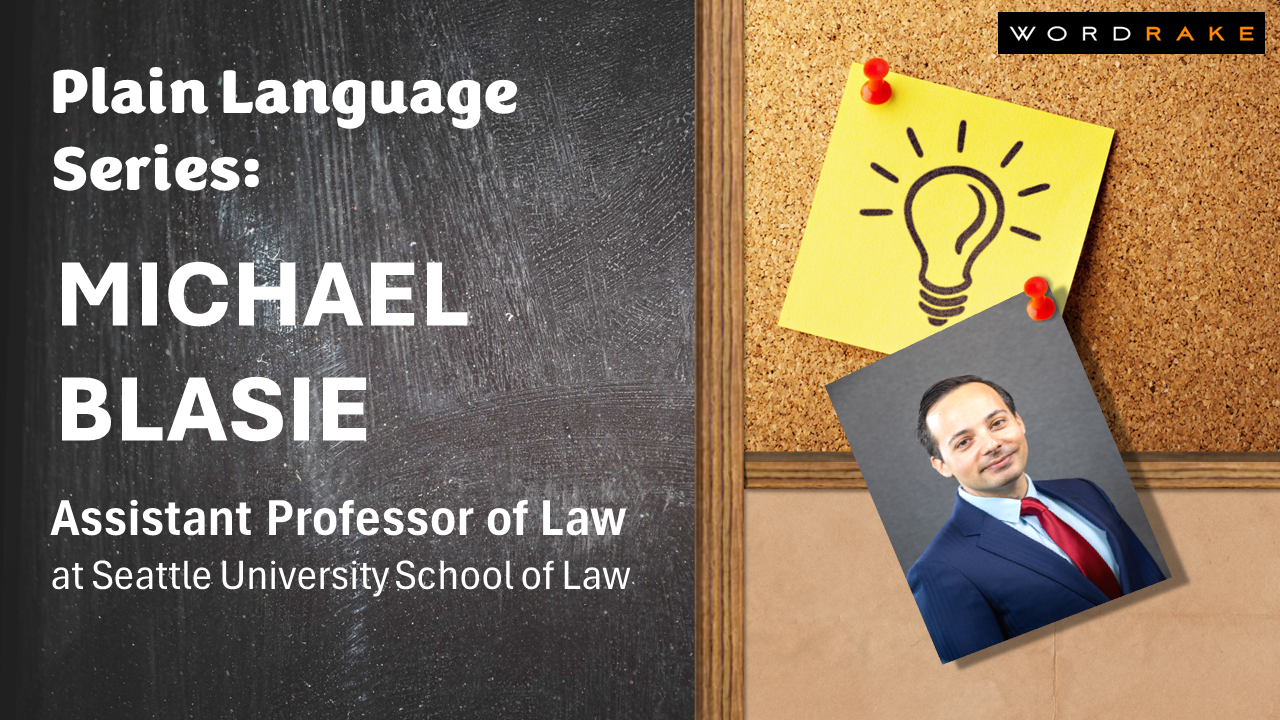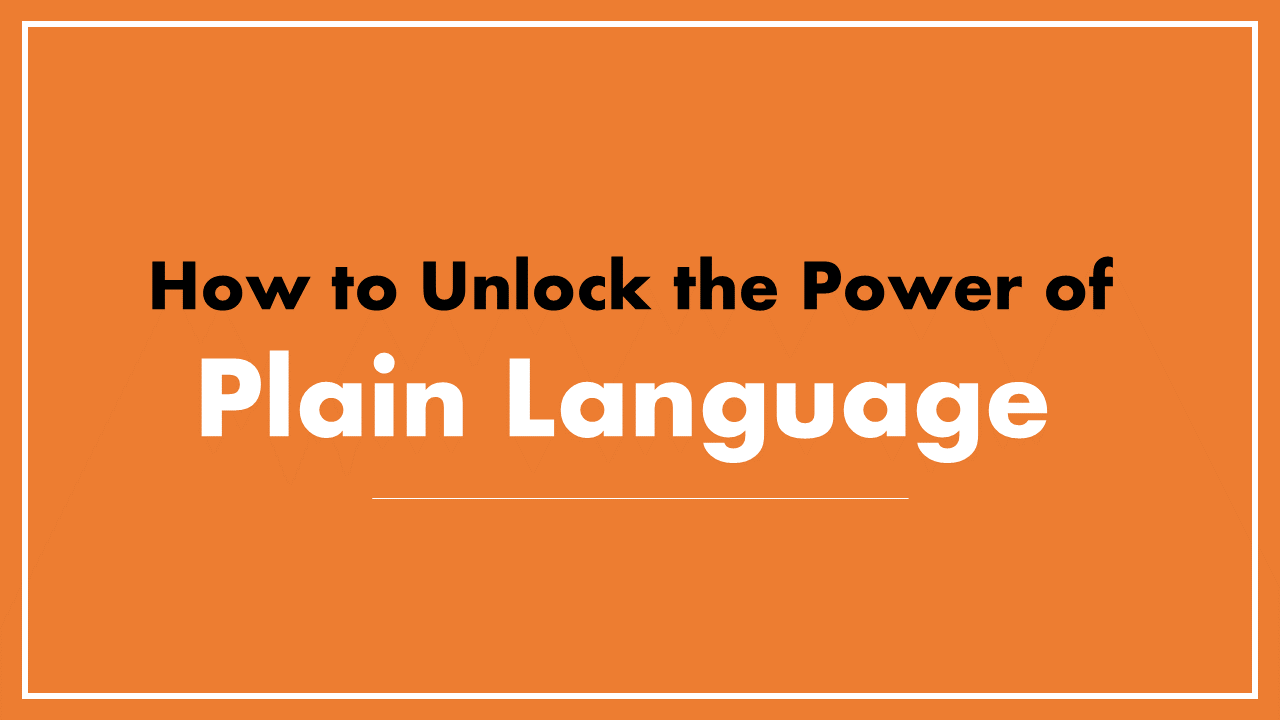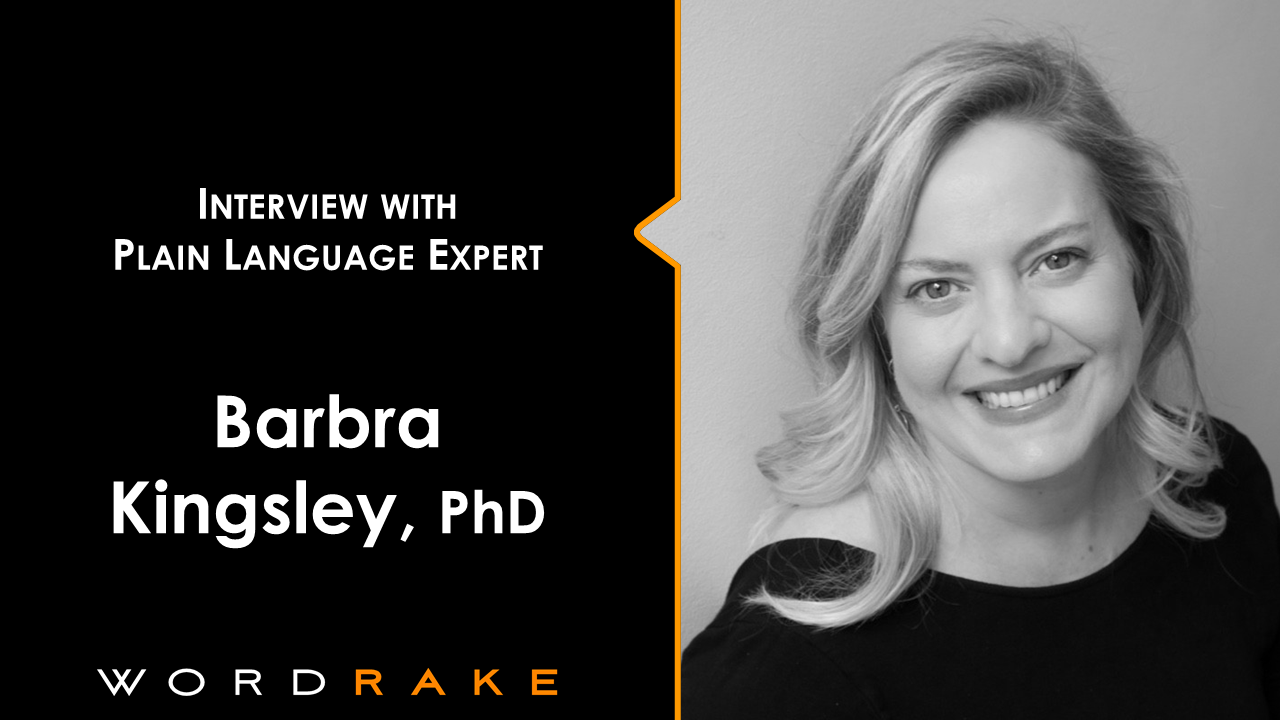Plain language is innovative. Every time a writer decides to place their reader first, they embark on a new way to communicate. For Professor Michael Blasie, the need for clear communication sparks passion and creativity. He shares his journey from young lawyer imitating the jargon of the past to plain language expert and inventor in celebration of International Plain Language Day.
What is your role and how is it connected to plain language?
I am a researcher, inventor, and teacher driven by one goal: a world where everyone can understand legal documents.
As a researcher, I study legal document design and legal language from all areas of law, from privacy notices and leases, to healthcare waivers and environmental reports, to statutes and legal briefs, and more. I also study the effects of plain language laws and initiatives.
Based on what I learn from my research, I invent. Those inventions might be identifying trends or best practices, dissecting plain language laws, or developing arguments for when and how to use plain language. Eventually, I hope to invent new legal documents.
Finally, as a teacher I strive to make information about plain language accessible and usable to everyone everywhere. I train law students, lawyers, judges, courts, governments, and businesses how to use plain language.
What prompted your interest in plain language?
Pain and joy. As a junior lawyer, I had no idea how to write legal documents, so I copied the templates and examples at my firm. After a few years, I became very good at that method. But then my writing hit a wall. I could not get better. I could not figure out how to remain loyal to those templates while also providing the intense satisfaction readers got from what the best writers produced. Over two years, I read everything I could on legal writing. Then I interviewed all the judges and lawyers near me who had a reputation for being exceptional, thoughtful writers. This process hooked me. I loved talking with writing nerds and discovering new ideas. Legal writing morphed from being mechanical, imitative, and filled with barriers, to being creative, empowering, and filled with opportunities. I started to teach continuing legal education (CLE) classes to lawyers to share what I learned. They loved it. They were thirsty for change. Now I do this kind of research and teaching for a living.
What is the difference between plain language and plain English?
To me, plain English is a subset of plain language. Plain language is a reader-focused drafting concept where the drafter’s goal is the reader understanding the document. Plain English is the concept of plain language applied to the English language. Thus, you could also have plain Spanish, plain German, plain French, etc.
This explanation raises an interesting question: is what makes a document understandable universal or does it change based on language? The recently passed International Organization for Standardization plain language standard suggests at least some plain language concepts apply across many languages. But there likely are important differences between different languages and even dialects that plain language drafters should consider.
Moreover, language is just one of many factors plain language drafters should consider. Others include the intended readers’ literacy as well as their familiarity with the document and its subject, and the medium (paper, electronic). Plus, keep in mind plain language involves more than just document text. Organization, margins, font, charts, images, bullet points, and anything within the drafter’s control are all plain language tools.
What are unexpected ways that plain language comes up in law, healthcare, and finance?
Plain language is a hot topic in law and will continue to be for decades. My most recent data (as of October 2023) shows the U.S. has 998 plain language laws spread across every state and the federal government. That number climbs every month. Statutes, regulations, and even state constitutions require plain language. Some laws cover private sector documents, others government documents. Internationally, plain language laws are catching on too.
Currently, the two hottest areas of coverage are consumer protection and government documents. Consumer protection is a broad category covering form documents a company uses with all its consumers. Nowadays we encounter these multiple times every day. Leases and mortgages are good examples, as are all those terms and services we click we have read and understood, even though none of us have read them, and even if we did none of us would understand them. Financial disclosures are another good example. Patient consent forms and explanations of patient rights have received a lot of attention recently. In fact, a new plain language law prevents certain hospitals from collecting payments when the bill does not use plain language. Plain language laws covering government writing currently enjoy bipartisan support. Recent proposals have required plain language summaries of new regulations, or plain language government contract solicitations.
As with most industries, technology is playing a bigger role. Many companies have announced products that promise to use artificial intelligence to craft understandable legal documents.
What are some factors that indicate a need to write in plain language?
Trick question. No factors indicate you need to write in plain language, because you always need to write in plain language. It makes no difference whether you are writing an email to your sibling or a contract for your business. As drafters, we write because someone might/will/could/should read our document. Whoever that is becomes our reader. As drafters, our mission is to add value to our readers. Ask yourself: who is my reader, what do they need from this document, and how do I give them what they need?
How does plain language impact access to justice?
Plain language has enormous ties to access to justice. A growing number of people do not have access to lawyers and yet must still navigate the justice system. Self-represented litigants struggle to comprehend legal documents. That struggle causes major problems for them. They risk inadvertently waiving their rights, wasting time and money, and losing their case. Courts also incur immense costs from improper filings. And there is a massive sense of unfairness and a lasting hit to the justice system’s credibility. Even outside the court system, encountering documents you do not understand leaves a distinct impression you are helpless.
When courts, governments, and businesses use plain language, the results are extremely positive. Consumers buy more while complaining and suing less. Employee morale and productivity increase. Litigants comply with court rules and translation costs go down. Citizens follow directions without extra help, which frees government employees for other tasks.
What’s the most important—yet simple—change professionals can make to consumer-facing documents to improve understanding?
Accept that your responsibility is to add value to the reader.
Learn about your reader.
Remember the pain you felt when you had to understand a document that was incomprehensible (e.g., DMV website, insurance policy, etc.) Don’t cause that pain to others.
Embrace change. Jettison templates and try new approaches.
Talk to your readers. Get feedback. Find out what they thought of your document.
About Michael Blasie
Michael Blasie is the nation’s leading expert on plain language laws. He serves as a professor at Seattle University School of law and presents nationally and internationally on designing legal documents, including in Argentina, India, Turkey, and Uzbekistan. In 2023 Plain Language Association International selected him as a keynote speaker for the annual international plain language conference.
Professor Blasie invented the method to find, categorize, and track all U.S. plain language laws. He regularly updates his book, Plain Language Laws in the United States, which is the only place to find all United States plain language laws and data comparing jurisdictions, coverage, standards, and more. Most of his research on plain language laws is free to access online.
Professor Blasie serves as a writing instructor for the National Judicial College, where he teaches state and federal court judges from across the United States and the world how to improve judicial opinion writing. He also teaches lawyers.
Prior to becoming a professor, he spent ten years serving as a civil and criminal litigator in New York City and Denver, and as a law clerk to Judge David Richman.
Professor Blasie earned a law degree at New York University School of Law and his Bachelor of Arts from Hamilton College. You can find him on LinkedIn and Twitter.
About WordRake and International Plain Language Day
Plain Language experts Cheryl Stephens and Kate Harrison Whiteside created International Plain Language Day on October 13, 2011 to celebrate the first anniversary of the signing of the Plain Language Act in the United States. Since then, plain language enthusiasts take time each year to celebrate the gains the movement has made.
In October 2022, WordRake celebrated Plain Language Day by releasing their new Simplicity editing mode to help comply with plain language laws. As firm believers in the importance of clear communication, WordRake celebrates October 13th by highlighting experts and leaders in the plain language field. To see how WordRake can help you simplify your writing, take a 7-day free trial today!









